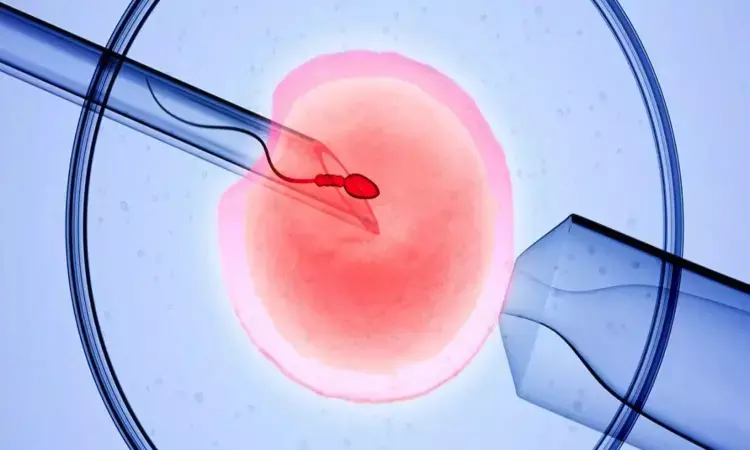- Home
- Medical news & Guidelines
- Anesthesiology
- Cardiology and CTVS
- Critical Care
- Dentistry
- Dermatology
- Diabetes and Endocrinology
- ENT
- Gastroenterology
- Medicine
- Nephrology
- Neurology
- Obstretics-Gynaecology
- Oncology
- Ophthalmology
- Orthopaedics
- Pediatrics-Neonatology
- Psychiatry
- Pulmonology
- Radiology
- Surgery
- Urology
- Laboratory Medicine
- Diet
- Nursing
- Paramedical
- Physiotherapy
- Health news
- Fact Check
- Bone Health Fact Check
- Brain Health Fact Check
- Cancer Related Fact Check
- Child Care Fact Check
- Dental and oral health fact check
- Diabetes and metabolic health fact check
- Diet and Nutrition Fact Check
- Eye and ENT Care Fact Check
- Fitness fact check
- Gut health fact check
- Heart health fact check
- Kidney health fact check
- Medical education fact check
- Men's health fact check
- Respiratory fact check
- Skin and hair care fact check
- Vaccine and Immunization fact check
- Women's health fact check
- AYUSH
- State News
- Andaman and Nicobar Islands
- Andhra Pradesh
- Arunachal Pradesh
- Assam
- Bihar
- Chandigarh
- Chattisgarh
- Dadra and Nagar Haveli
- Daman and Diu
- Delhi
- Goa
- Gujarat
- Haryana
- Himachal Pradesh
- Jammu & Kashmir
- Jharkhand
- Karnataka
- Kerala
- Ladakh
- Lakshadweep
- Madhya Pradesh
- Maharashtra
- Manipur
- Meghalaya
- Mizoram
- Nagaland
- Odisha
- Puducherry
- Punjab
- Rajasthan
- Sikkim
- Tamil Nadu
- Telangana
- Tripura
- Uttar Pradesh
- Uttrakhand
- West Bengal
- Medical Education
- Industry
Assessment of Natural vs. Mildly Stimulated Cycles in Women with Low Ovarian Reserve Undergoing IVF Treatment - Study

Assisted reproduction technology (ART) is the main method used to address infertility and facilitate conception. Recent study compared the pregnancy outcomes and embryo quality between natural cycles and mildly stimulated cycles in women with low ovarian reserve undergoing in-vitro fertilization (IVF) treatment.
The main findings of the study are: 1. The pregnancy rate was significantly higher in the natural cycle group compared to the mildly stimulated cycle group (51.8% vs. 40.1%, p=0.046). 2. Natural cycles exhibited higher rates of available embryos (84.1% vs. 78.6%, p=0.040), high-quality embryos (61.8% vs. 53.2%, p=0.008), and utilization of oocytes (73% vs. 65%, p=0.001) compared to mildly stimulated cycles. 3. In natural cycles, 94.9% of oocyte retrievals were performed between 7:00 and 19:00, and 96.4% of oocyte retrievals in natural cycles with high-quality embryos occurred during this timeframe. This suggests that appropriately timed oocyte retrieval during natural cycles may be crucial for obtaining good quality embryos. 4. There were no significant differences in pregnancy outcomes and embryo quality between patients with repeated failed IVF cycles and those undergoing their first IVF cycle in the natural cycle group. This indicates that natural cycles may be a viable option for patients with low ovarian reserve who have experienced repeated IVF failures.
In conclusion, the study suggests that natural cycles, with proper timing of oocyte retrieval, may present a favorable approach for women with low ovarian reserve undergoing IVF treatment compared to mildly stimulated cycles. The findings highlight the potential benefits of natural cycle IVF in this patient population.
Key Points
Here are the 6 key points from the research paper:
1. The pregnancy rate was significantly higher in the natural cycle group compared to the mildly stimulated cycle group (51.8% vs. 40.1%, p=0.046).
2. Natural cycles exhibited higher rates of available embryos (84.1% vs. 78.6%, p=0.040), high-quality embryos (61.8% vs. 53.2%, p=0.008), and utilization of oocytes (73% vs. 65%, p=0.001) compared to mildly stimulated cycles.
3. In natural cycles, 94.9% of oocyte retrievals were performed between 7:00 and 19:00, and 96.4% of oocyte retrievals in natural cycles with high-quality embryos occurred during this timeframe, suggesting that appropriately timed oocyte retrieval during natural cycles may be crucial for obtaining good quality embryos.
4. There were no significant differences in pregnancy outcomes and embryo quality between patients with repeated failed IVF cycles and those undergoing their first IVF cycle in the natural cycle group, indicating that natural cycles may be a viable option for patients with low ovarian reserve who have experienced repeated IVF failures.
5. The study suggests that natural cycles, with proper timing of oocyte retrieval, may present a favorable approach for women with low ovarian reserve undergoing IVF treatment compared to mildly stimulated cycles.
6. The findings highlight the potential benefits of natural cycle IVF in the patient population with low ovarian reserve.
Reference –
Rui-Ying Yuan, Sen Li, Xie Feng, Xiao-Long Li, Xiao-ting Lin, Fu-min Gao, Hai-Jing Zhu, Yong-shi Li, Yan-chu Li & Xiang-Hong Ou (2024) Comparison of embryo qualityand pregnancy outcomes for patients with low ovarian reserve in natural cycles and mildly mstimulated cycles: a cohort study, Journal of Obstetrics and Gynaecology, 44:1, 2303693, DOI: 10.1080/01443615.2024.2303693
MBBS, MD (Anaesthesiology), FNB (Cardiac Anaesthesiology)
Dr Monish Raut is a practicing Cardiac Anesthesiologist. He completed his MBBS at Government Medical College, Nagpur, and pursued his MD in Anesthesiology at BJ Medical College, Pune. Further specializing in Cardiac Anesthesiology, Dr Raut earned his FNB in Cardiac Anesthesiology from Sir Ganga Ram Hospital, Delhi.


